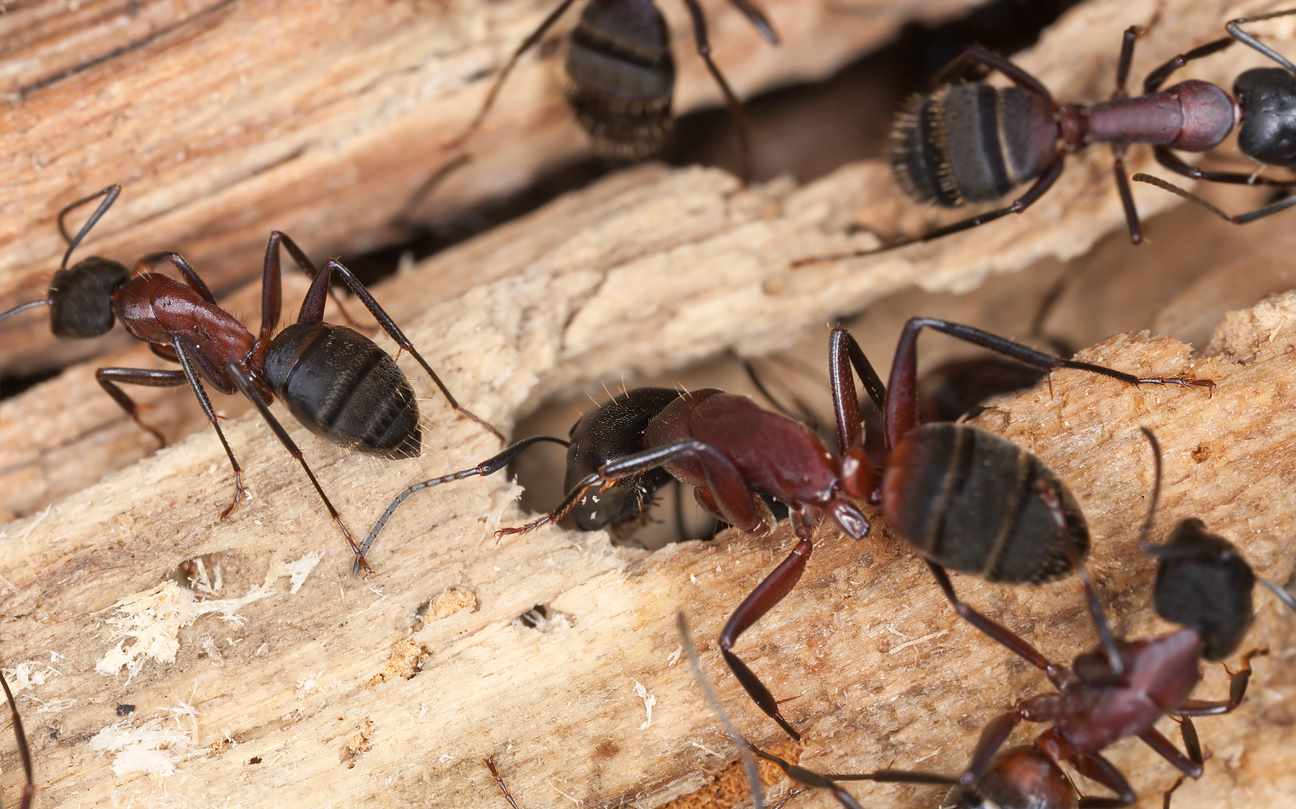
Worried you may have a pest invader feasting on your home’s wood frame? You’re not alone. Every year during the spring both termites and carpenter ants swarm to mate and spend the summer causing millions of dollars of damages to homes across the country. Knowing the difference between these two wood munchers is important to properly deal with the infestation. Read on below for an in depth guide to the differences between termites and carpenter ants, and as always you can call us or contact our team if you have questions or want to schedule a free initial inspection of your home.
Termites vs. Carpenter Ants
To the untrained eye, (which is most eyes, unless those eyes work in pest control!), it can be hard to tell termites and carpenter ants apart. Both love to destroy the wood in your home and cause damage, and both swarm and become active in the spring and summer months. Plus, they are unfortunately roughly the same size. We will walk through the visual and behavioral differences below so that you can identify which insect may be infesting your home.
Behavioral Differences Between Carpenter Ants and Termites
Though they may both love feasting on your home’s wooden frame, these two insects go about it differently. They interact with wood in distinct ways, which can help you tell them apart. Carpenter ants only dig into wood in order to excavate their nests. What makes that different from termites is that carpenter ants don’t actually eat the wood–they just move it out of their colonies to make space.
Therefore, if you see small piles of wood shavings or insect waste beneath the holes in your baseboard or walls, it could likely be carpenter ants. These ants also look for damaged or wet wood to make nests, while termite so for the healthy wood. Their tunnels and colonies will be smooth and finished, unlike the rough tunnels of termites. Carpenter ants can often be spotted in the open searching for food, while termites avoid light and are therefore rarely spotted unless you find their nest.
Termites, on the other hand, eat the wood that they nest in. This is a big difference between them and carpenter ants, who just excavate the wood to create their colonies. Tunnels of termites will appear rough, without smooth walls, since they are filled with dirt and mud. Another key indicator of termites is the presence of mud tubes. Termites build these tubes on the exterior of walls to serve as transportation between soil and wood, and throughout their colony. If you are having a difficult time identifying the pest in your home or business, contact us for a free initial inspection.
Physical Differences Between Termites and Carpenter Ants
If you can stand being close enough to these insects to get a good look at them, you’ll notice some significant differences between them in terms of their shape and physical appearance. You can use your naked eye to spot these if you can get close enough.
Wings
Both carpenter ants and termites have wings. At first glance you may think this makes it *harder* to tell the difference between them, but there are actually some significant differences between their wings that can help identify each pest. Both insects have four wings. However, a carpenter ants’ back wings are shorter than its forewings, and its wings are proportionate to its body size. A termite, however, has wings that are all of the same size. They are also much longer than its actual body. In addition, the wings on termites are not as durable as the wings on carpenter ants. Why does this matter? Well, termite wings can fall off easily. This means that if you see little wings around the opening of a nest, this can be a solid identifier of a termite infestation.
Color/Appearance
Termite workers are transparent or light in color. By contrast, carpenter ant workers are darker colored, sort of a rust red. These physical differences can help you tell them apart if you spot one.
Body
The body of a termite is rectangular, and does not narrow in the center. This is different from the carpenter ant. Carpenter ants have a narrow waist. If you can spot this detail, you can tell these insects apart.
Antennae
A carpenter ant’s antennae are bent, and resemble an arm bent at the elbow. Termites, on the other hand, have straight antennae that appear like a string of beads.
Treatment Options for Carpenter Ants and Termites
While these two insects may have similar activity habits, the treatment protocols for each are very different. That is why it is important to distinguish between each. If you have a pest causing damage to the wood frame of your home or burrowing into wooden surfaces, contact your local pest control heroes at Cleggs. Our team will perform a FREE initial inspection to determine which pest is plaguing your home and put together a treatment plan to exterminate them and liberate your space. Call us or contact us through the form below to speak to our team and schedule your inspection today!
